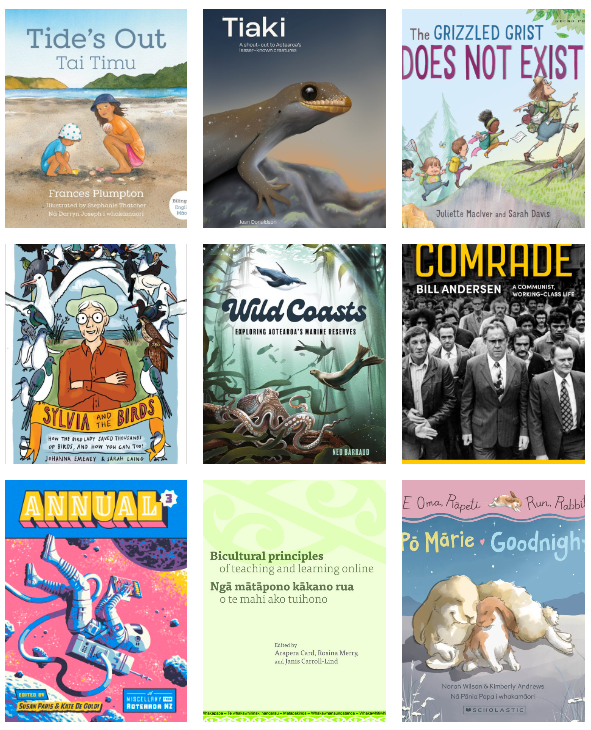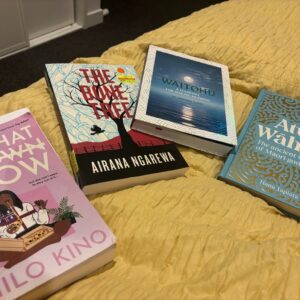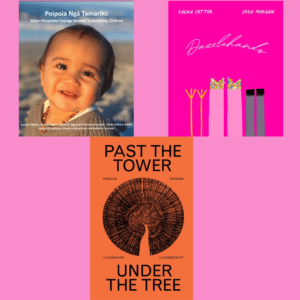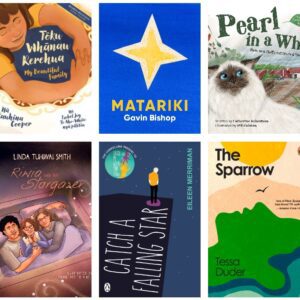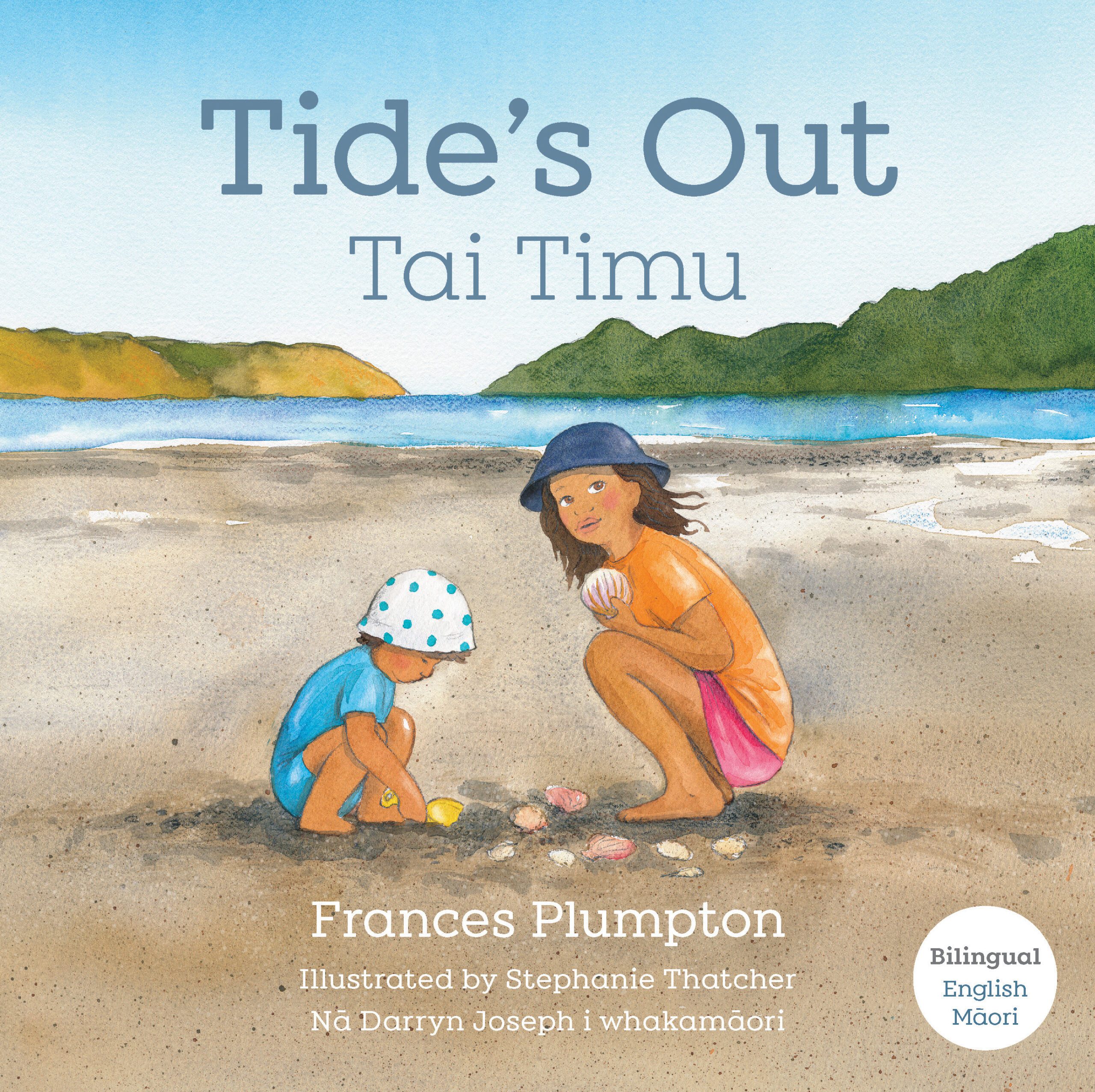
Tide’s Out Tai Timu
Frances Plumpton, Stephanie Thatcher, Darryn Joseph (Mary Egan Publishing)
Age: 2-7
“Tide’s out – what can we find? / Kua timu te tai – he aha rā hei kitenga mā tāua?” Beautifully illustrated in watercolour, this bilingual descriptive counting book features over 20 of the creatures, shells and birds that can be found on beaches throughout Aotearoa. It would be excellent to share with curious kids before or after a trip to the beach, or for classes talking about living treasure that they find in nature. For older children it could lead into learning about tides and estuaries. – Sarah Silver

Comrade – Bill Andersen: A Communist, Working-Class Life
Cybèle Locke (Bridget Williams Books)
Biography
Cybèle Locke’s Comrade tells the life story of Bill Andersen, one of the most influential figures in the New Zealand labour movement of the 20th century. Andersen’s life, however, was inseparable from his politics (communist and working class, as the title suggests), and as such the book is much more than the story of one man. Instead, it’s a history of trade union responses to the challenges of the post-war and then neoliberal periods, from Andersen’s perspective. As well as plenty on union organisation and government policy, particularly regarding the structure of the economy and industrial relations, issues covered include the development (or degeneration) of socialist politics in New Zealand, union responses to Māori land struggles, the inclusion of Māori, Pasifika and women workers at all levels of the union movement, and the place of rugby league as a working class sport. Locke is a lively and engaging writer with deep subject knowledge, and I left the book with a far greater understanding of many moments in New Zealand history. Alongside her previous book, Workers in the Margins, Comrade is an absolute must-read for anyone interested in the union movement or socialism in New Zealand, with several teachable examples of solidarity and resistance, Māori land struggles, and working-class life.
– Ben Rosamond
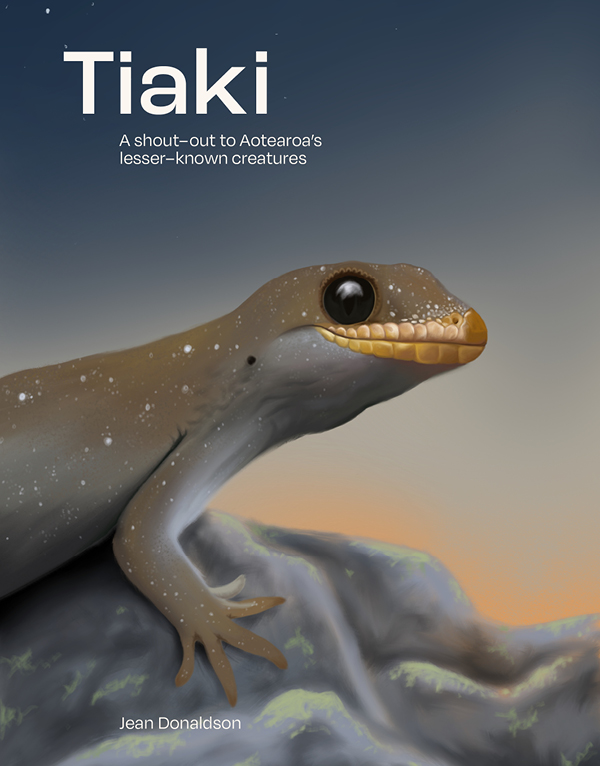
Tiaki: A shout-out to Aotearoa’s lesser-known creatures
Jean Donaldson (Potton and Burton)
Age: 10+
Upon opening this small book you are welcomed by an array of amazing digital paintings and targeted facts about the unsung creatures of Aotearoa who are not well known, yet are vital to the biodiversity of their native country. Following an indigenous theme, you will find each creature with its English and Māori names where available.
Targeted at pre-teens to teenagers, this book details not only some fun facts about these creatures but also a map of their specific locations in Aotearoa. Full of stunning images in black and white to full colour, with not too many words, it is suited to a large audience, especially the young environmentalist and conservationist.
Delve into this stunning factual book to see what might be lurking in your own backyard, and to learn something new about a little or unknown creature.
– Kerry Wood

Īhaka and the Unexpected Visitor
Kirsty Wadsworth, Zac Waipara (Scholastic)
Age: 3-8
One day Īhaka arrived home from school and saw his mother digging kūmara in the back garden. But before he took off his school bag, he heard a booming knock at the door. He ran to open the front door. With a loud WHOOSH and a “tremendous whirl of wind, Tāwhirimātea swept in.” He wanted Īhaka to help him with a problem…
A wonderful story that introduces the reader to Māori gods, but in a modern context. There are simple reo phrases which are repeated throughout the story.
I really enjoyed the illustrations that brought life to the power of the gods, and I particularly loved the final image of Īhaka tucked up in bed, safe in knowing Tāwhirimātea and the missing cloud were together creating the wonderful storm outside. I was super stoked to learn this book is also published in te reo Māori.
– Heather Holmes
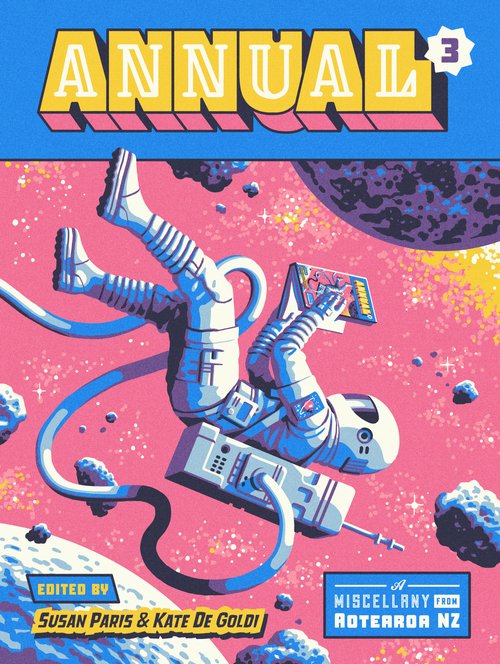
Annual 3: A Miscellany from Aotearoa NZ
Edited by Susan Paris and Kate De Goldi (Annual Ink)
Age: 9-13
Annual 3 is the third in a series edited by Susan Paris and Kate de Goldi. It is visually lively, content-rich and varied. There is something for everyone, in terms of length and variety. The 10-year-old reader I consulted found it “Awesome, with loads of interesting stories and even a board game. Loads of it was funny, even the mini-comics!” He even found the cover fascinating. It is a book you can re-read and dip into, and we would highly recommend it for the age group it is designed for.
– Suzanne Innes-Kent
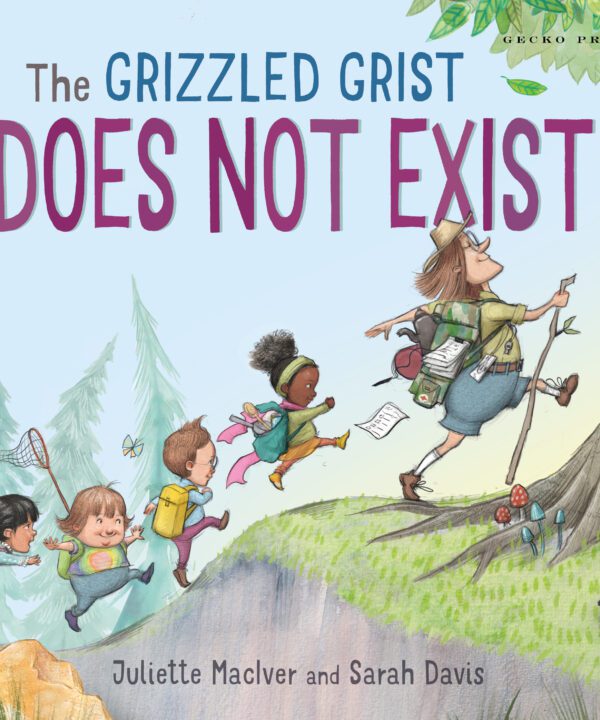
The Grizzled Grist Does Not Exist
Juliette MacIver, Sarah Davis (Gecko Press)
Age: 2-4
We thought it was a bit scary the first time we read it, but the next time and the last time it wasn’t. We also thought it was a little bit funny. The teacher was nice to all the kids, but not really to Liam, because she didn’t think hiding was a skill.
We found out that Liam’s skill at hiding becomes really useful later in the book, but we can’t tell you why because it will spoil the surprise. It reminded us a little bit of The Gruffalo and we loved it at the end when the children said “Hooray for Liam”. We are three and four years old and we recommend this book to other children who are two, three or four years old. – Kira, Kora, Eva, Lex, Matilda (ngā tamariki o Hill Street Early Childhood Centre)

E Oma, Rāpeti: Pō Mārie
Run Rabbit: Goodnight
Norah Wilson, Kimberly Andrews, Pānia Papa (Scholastic)
Age: 0-4
I might be biased as my toddler’s favourite bedtime toy is called Rāpeti, but this book has won my heart. The fun and warm illustrations (think Guess How Much I Love you?) combined with playful and familiar language make this a perfect bedtime story. As a te reo learner, I find having the English translation under the te reo means I use the reo more confidently. The two other books in the series featuring Rāpeti, Te Wā Tākaro/Playground and Te Rēhi/The Race are also delightful. – Sarah Silver
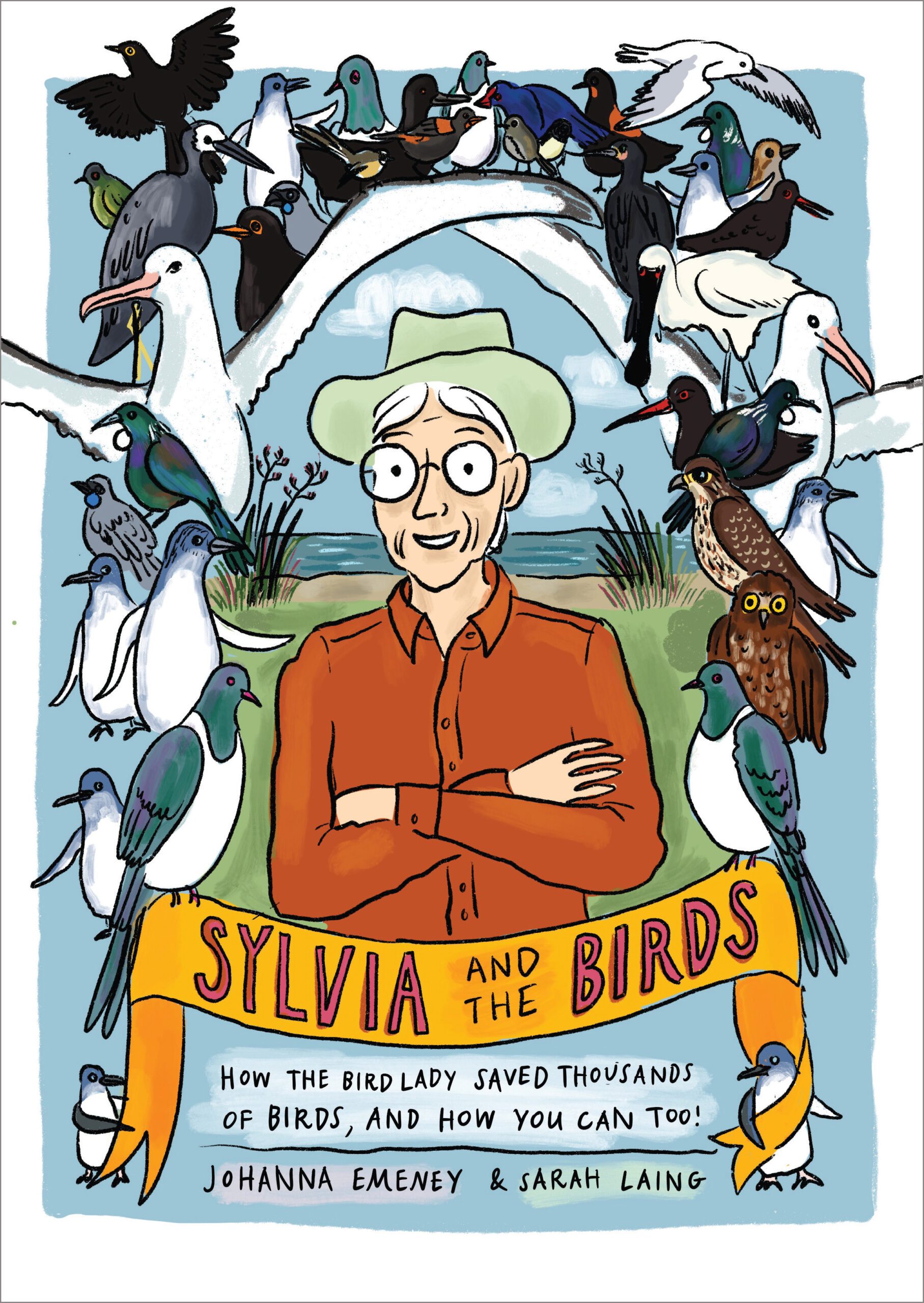
Sylvia and the Birds
Johanna Emeney and Sarah Laing (Massey University Press)
Age: 10+
Sylvia and the Birds is a simply stunning book to read and explore. The amazing illustrations tell a story of their own. The book is hardcover, and every page is a visual treat for the reader young or old. The illustrations made the book more accessible to my child who is neurodiverse. It was a more ‘grown-up’ book, which can be hard to find for neurodiverse children. The book underpins beautiful values about the importance of looking after all, including our birds. It tells a story of one remarkable women’s commitment to caring for and looking after 140,000 birds here in Aotearoa.
The book has a wonderful fun activities section which creates opportunities to reinforce the stories and journeys of birds in an educational way for children. The backyard bird-spotting chart and count the birds in your garden activity are fun ways to learn about our native birds. Sylvia is an incredible and inspiring woman who has lived a remarkable life of service to others including our birdlife here in Aotearoa. This is a powerful story to share with our young and old. – Jody Anderson
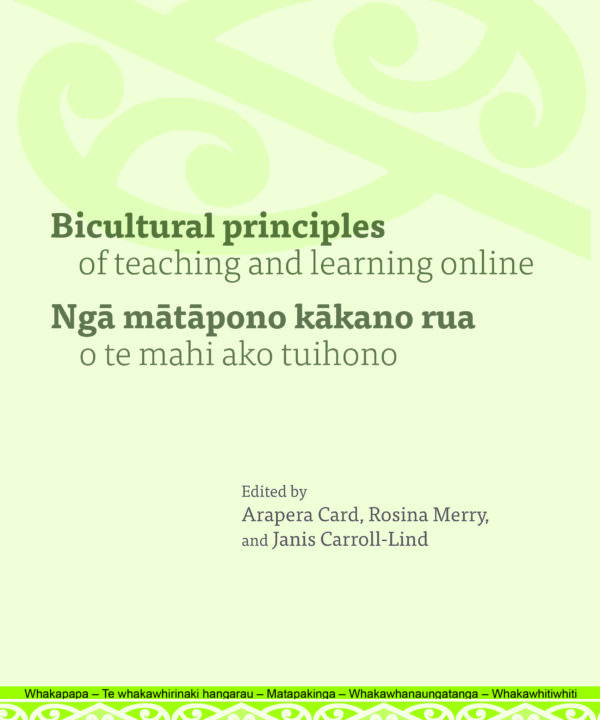
Bicultural Principles of Teaching and Learning Online
Ngā Mātāpono Kākano rua o te Mahi ako Tuihono
Edited by Arapera Card, Rosina Merry, and Janis Caroll-Lind (NZCER Press)
Teaching resource
This book explores 11 bicultural principles for creating online learning spaces that tailor to cultural responsiveness. This insightful read is written by a team of 11 staff from Te Rito Maioha, from the lens of educators who work with tauira through online learning systems. The principles can be used to guide the structure of all online gathering spaces. This is an exceptional read for anyone who is organising in the digital space.
In an ever-changing online world, it can be challenging to translate the kawa (protocol) and tikanga (customs or ways of doing) of bringing people together in an online space. The book begins with a dive into cultural responsiveness and how this can be guided in the online learning space. The individual breakdown of the 11 bicultural principles provoke deep reflection about practices.
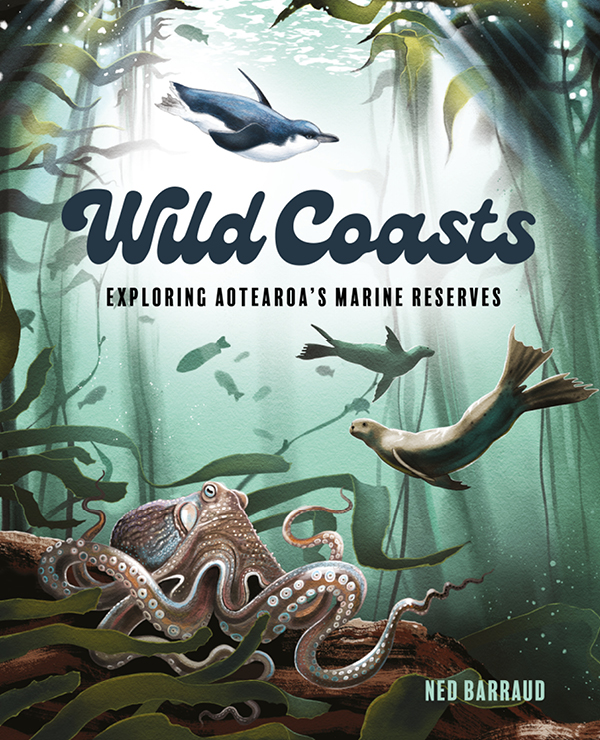
Wild Coasts: Exploring Aotearoa’s Marine Reserves
Ned Barraud (Potton and Burton)
Age: 7-10
There are 44 marine reserves in Aotearoa, created to protect coastal flora and fauna. This book dives below the ocean surface in six of these “wild safe zones”, exploring over 50 different species that now flourish there. The vivid and accurate illustrations are complemented by bite-sized pieces of text, keeping the reader engaged, but not overwhelmed. For budding environmentalists and marine biologists, Wild Coasts gives hope that we can have a positive impact on our environment, explaining the impact of overfishing and the importance of these reserves to the marine ecosystem. – Sarah Silver

One Weka Went Walking
Kate Preece, Pippa Ensor (Bateman Books)
Age: 4+
From cover to cover, One Weka Went Walking delights the reader with beautiful water colour images of the most vulnerable and endangered birds of the Chatham Islands. The text flows with an easy rhythm and offers tantalising clues about each bird’s feeding habits and environment. Additional facts are provided as footnotes. A great book for a range of reading ages and abilities, from enticing rich conversation and questions through to investigation and research. Superb. – Heather Holmes
